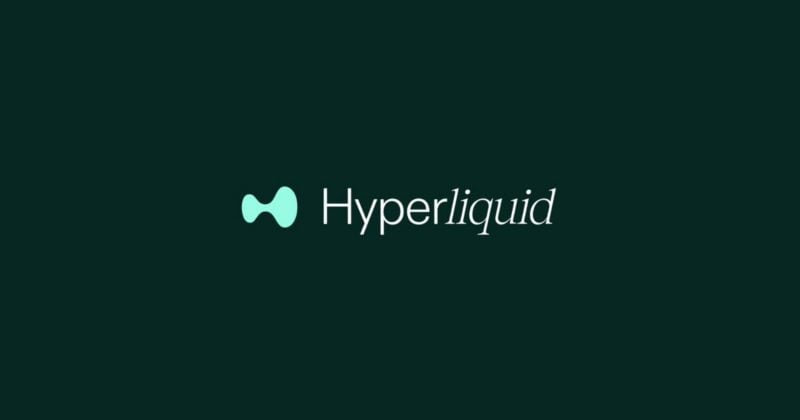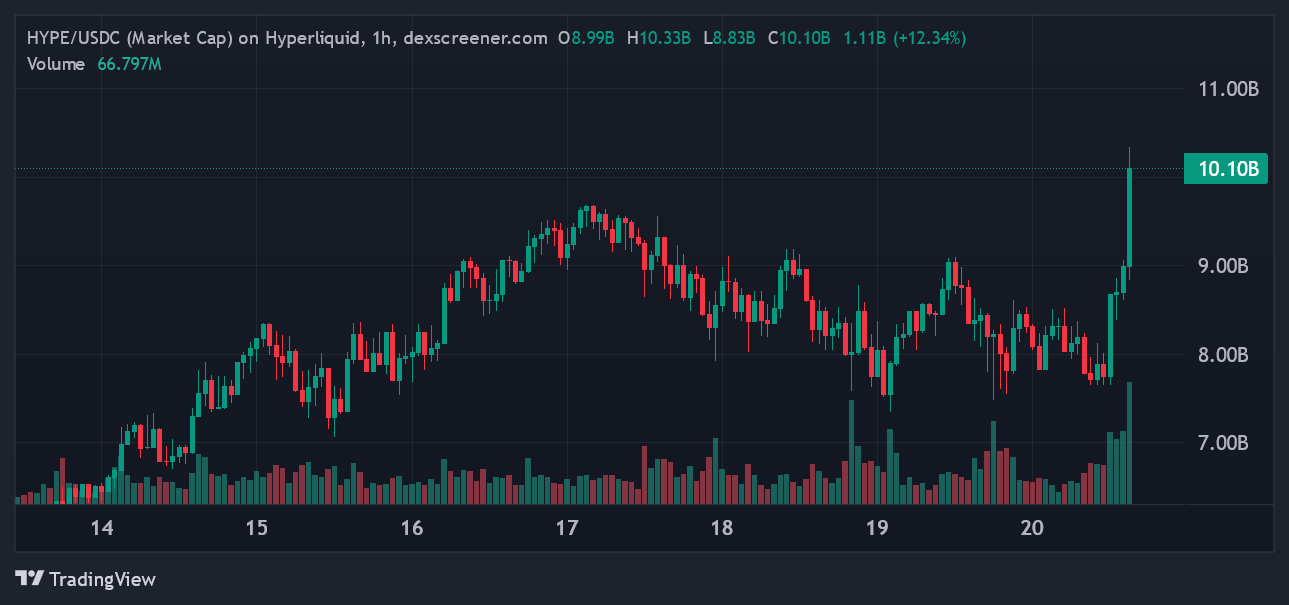Hyperliquid’s HYPE token surges past $10 billion market cap

Key Takeaways
HYPE surpasses $10 billion market cap, entering the top 25 coins by market capitalization.
Hyperliquid’s HYPE token surges 20% in one day, reaching a new all-time high of $30.
Share this article
Hyperliquid’s native token HYPE surpassed a $10 billion market capitalization, with its price exceeding $30 per token.
This milestone comes amid broader market volatility following Fed Chair Jerome Powell’s hawkish speech on Wednesday.

While Bitcoin fell from its all-time high of $108,000 to $92,000 yesterday—a nearly 15% decline—and many altcoins experienced drops exceeding 25%, the market has since shown some recovery, with Bitcoin trading around $97,000.
In the same period, HYPE token also saw some losses but has now surged over 20% in the past 24 hours, entering the top 25 coins by market cap.
Hyperliquid is on the verge of entering the top 20 coins by market cap, currently just below Polkadot, which has a market cap of $10.5 billion.
At press time, Hyperliquid stands at $10.2 billion and could potentially flip Polkadot in the coming days.
The token’s rise follows one of the most anticipated token airdrops of the year, with the platform distributing 310 million tokens to Hyperliquid users, making it the largest airdrop in crypto history.
This distribution surpassed Uniswap’s UNI airdrop from September 2020, which had previously held the title as the biggest airdrop, peaking at $6.4 billion in value in May 2021.
Hyperliquid has recorded $13.7 billion in 24-hour trading volume and $561 billion in total volume, according to DefiLlama data.
One of the reasons for Hyperliquid’s success is its elimination of gas fees for transactions.
Additionally, the platform maintains low fees on perpetual contracts and opening trades, which are reinvested into the ecosystem through token buybacks or by supporting ecosystem vaults.
This model, combined with its ease of use and rapid interface, has earned Hyperliquid the nickname “decentralized Binance.”
Building on this success, with its token now valued at $30, Hyperliquid has demonstrated its potential as a leader in the DeFi space.
Looking ahead, Hyperliquid is preparing to enhance its ecosystem further with the launch of its Ethereum Virtual Machine (EVM) integration, HyperEVM, currently in its testnet phase.
This update will introduce Ethereum-compatible smart contracts, boosting cross-chain capabilities and expanding DeFi applications within the platform.
Share this article












